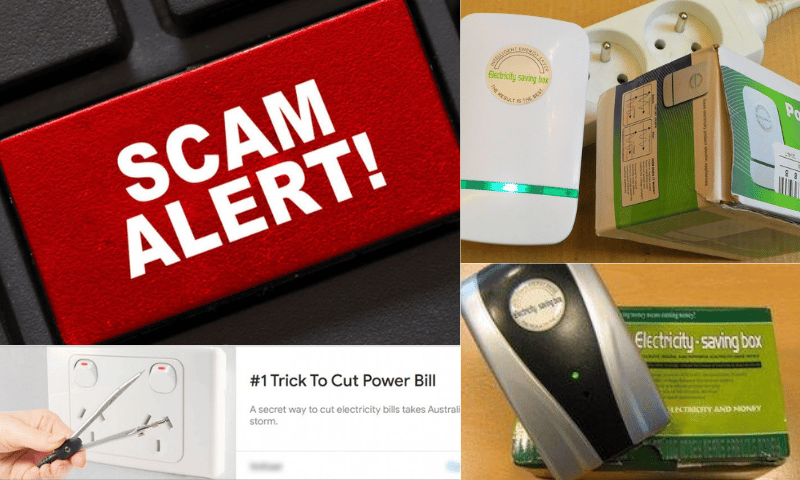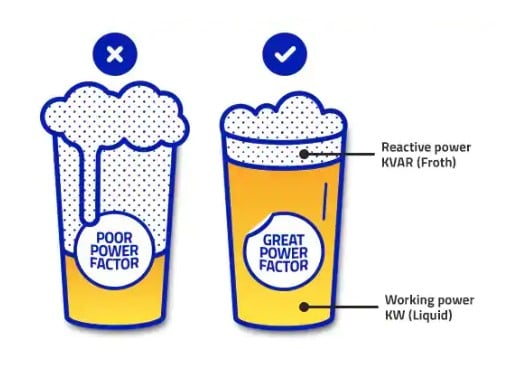Online advertisements constantly appear on users’ screens. There have been pop-up advertisements for a tempting product that promises to save electricity costs by 90%. And these goods are nothing more than a scam.
The power saver devices promoted are among the many variations of “power savers” frequently advertised online. Even though these power devices are inexpensive, buying them can be a waste of money, and there have been instances where they have overheated or caught fire.
These power saver devices include a plug, a small circuit board, an LED, and a capacitor—a power factor correction capacitor that isn’t very effective. This device is a hoax that won’t lower a household’s energy usage; typically, electricity suppliers base electricity costs on a household’s energy usage.
Examples of power saving device scams
There have been several examples of these small devices that can magically plug into the outlet and claim to decrease your electricity costs. You’re given an inexpensive plastic box that will not reduce your electricity usage. Known brands are Eco-Watt & Poke, MiracleWatt Voltex Volterbox & Voltifier. Voltex was discovered so quickly that it had to create a website for the similar Voltbox. When you read this, they may have an additional name.

A surefire method to get electrocuted, rather than save your electricity costs, is to try to plug metal objects into a power outlet. NEVER insert anything into a power outlet that is not rated for plugging in.
The Voltex Power Saver: is it a fraud?
One such scam is the “Voltex Power Saver,” a plug-in gadget offered for sale online and promises to cut your energy costs by at least half. However, the evaluations for Voltex power savers paint a different tale from the one presented on their website.
What precisely is a Voltex Power Saver, then? The Voltex energy saver: Does it work? And what do the reviews of the Voltex power savers say about it?
The ease and convenience of the Voltex energy saver are the selling point of the scam. It operates by plugging into the socket nearest your electrical outlet and begins working with no additional work required. The website asserts that it will save you money. Once plugged in, your Voltex power saver should operate without needing maintenance.
The Voltex energy saver does not, however, work. The Voltex energy saver contains nothing that might result in a lower energy cost.
Additionally, if you search elsewhere for evaluations of the Voltex power saver, you will encounter a well-known tale. On Trustpilot, 92% of the reviews are negative, all of which complain that the Voltex power saver did little to lower their expenses.
Everything about the company raises suspicions, even if you ignore the negative reviews and the dubious scientific claims. According to what we know, the corporation has undergone three name changes. The company, which was formerly known as “Motex,” then changed its name to “Ecovoltex,” and is now just known as “Voltex,” seems to alter its identity whenever fraud is discovered.
Energy Matters has a nationwide network of trusted local installers ready to provide you with up to 3 Free Solar Quotes. Complete our quick quiz and begin your solar journey today!
Household power saving scam review
How are power factors calculated on residential properties? Power factor correction makes sense for many businesses/industries.
Many companies are demonstrating that their energy saving units can reduce household consumption by using “active power factor correction”. The concept seems to make sense. However, this is impossible.
In 2008 and 2009, Auscha marketed and sold the power saver, a device that plugs into a standard electricity outlet made misleading claims about the power-saving ability of its Enersonic Power Saver device, the Federal Court found.
The Australian Competition and Consumer Commission’s (ACCC) argument focused on the claim that the power saver, a power factor correction capacitor, did not reduce the amount of electricity a household user used. Consumers of natural electrical power, also known as active power, as measured by household electricity metres, are typically the only ones who pay retail electricity suppliers. Domestic consumers cannot save money by utilising the power saver because it is unable to reduce the actual electrical power used by consumers at home.
The Australian Competition and Consumer Commission claimed that Auscha had violated the Trade Practices Act 1974 by making many false or misleading claims regarding the power saver in court proceedings started in July 2010.
What is power factor correction?
Large industrial businesses use the “power-factor improvement” technique to lower their load current for a specific load. If these companies’ power-factors drop below a certain level, they will be penalised. Only the quantity of load current is impacted by power-factor enhancement, not the amount of energy the business consumes. Why is it crucial to lowering load current? It lessens the need for the energy provider to spend money on heavier cables, bigger transformers, etc.
The power factor indicates how efficiently the business site’s equipment uses electricity. In technical words, it is the ratio of the working power (kW) to the perceived power (kVA) provided to your site.
Consider a beer glass filled with froth and amber liquid. You prefer more amber liquid and less froth as you pay for the entire glass of beer to get the most for your money. Poor power factor is similar to a beer with excessive froth, with the froth standing in for wasted time and money.
The amber liquid represents working power (kW on your bill). This power performs the actual work and can be harnessed to create heat, light or motion. Think of this as the satisfying liquid in the beer you’ve paid good money to drink.
The froth represents reactive power (measured in kVAr). This power maintains the electromagnetic field that makes some equipment run. Think of it as the froth on the head of your beer – while it’s a good thing to have, it’s not as satisfying as the amber liquid.

However, for domestic clients, a power-factor increase is unnecessary because energy providers charge for the energy they give, disregarding the power factor of residential loads. Power quality is improved by power factor correction devices, although energy efficiency is not generally increased (meaning they would not reduce electricity bills).
The devices are described in greater detail in this hilarious video as to why they malfunction.
Study of power saving in domestic loads
Using examples, we can examine household reactive resistance, electric loads and power surge characteristics.
Follow these techniques to save energy more simply and affordably:
- Utilise an energy monitor or a power metre to check the electricity used in your home.
- Convert all of your home’s lights to LEDs.
- Make the switch to low-power heating and cooling systems.
Your electricity expenses will be lower if you have a professionally installed high-quality solar power system on your roof. Although a solar power system is far more expensive than the advertised power saving gadget, it is a real device that won’t get thrown out like those dishonest power saving devices purchased from deceptive online advertisements.
Australian residents interested in switching to solar power systems can take advantage of several solar incentives and discounts. Look into other financing possibilities, such as home or solar green loans, if you lack the cash to buy the solar power system. Check out our page to learn more about green loans, low interest and interest free solar power systems.
Now is the right time to switch to Brisbane solar energy. We recommend seeking at least 3 solar quotes to ensure that you are getting the best deal and selecting the right solar installer in Brisbane whom you can trust. With this, you can guarantee a solar system in Brisbane that meets your energy needs.














































